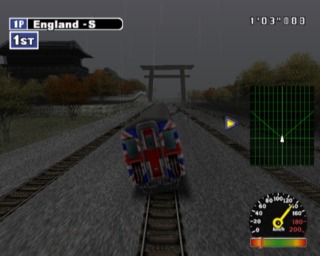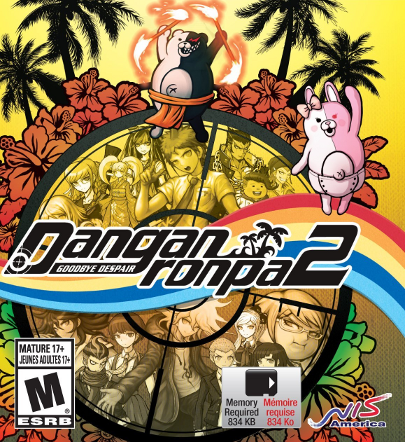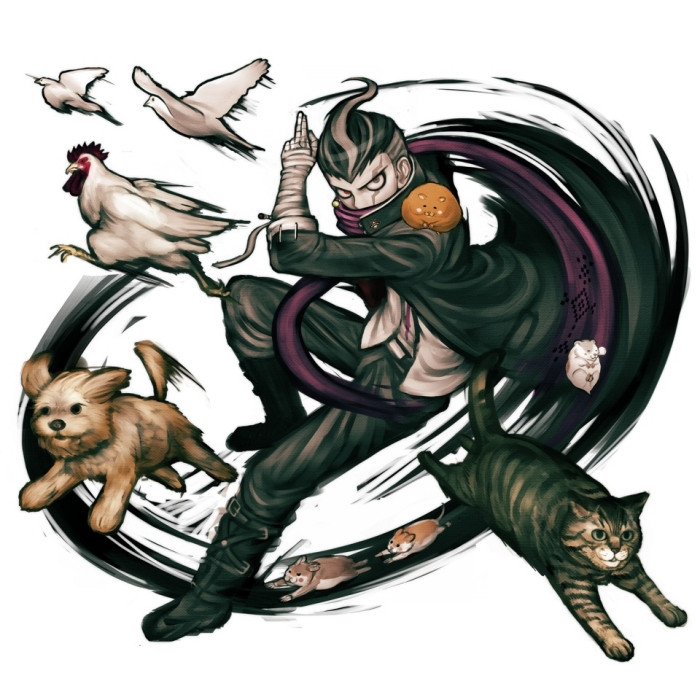All-New Saturday Summaries 2017-09-02
By Mento 3 Comments
Welcome to the first Saturday Summaries of September! To say we've had some shitty summer weather of late would be an understatement, so I'm always thankful for the coming of autumn. Not only do we all stop melting, but it also means an uptick in the release of quality video games and TV shows. Even though Game of Thrones has ended its somewhat uneven seventh season, I'm stoked to watch more BoJack Horseman and The Good Place very shortly, with Stranger Things season 2 coming the following month. Likewise, there's more games coming out this month and next that I'll ever find time to play: Ys VIII: Lacrimosa of Dana, Divinity Original Sin 2, Dishonored: Death of the Outsider, Metroid: Samus Returns, SteamWorld Dig 2, Danganronpa V3, Cuphead, A Hat in Time, Middle-earth: Shadow of War, ELEX, South Park: The Fractured But Whole, Super Mario Odyssey and Wolfenstein II: The New Colossus, as well as the SNES Classic and its long-awaited debut of Star Fox 2 for anyone who manages to find one. As someone I talked to in chat said, it's going to be great when GOTY season rolls around because the sheer amount of releases this year means everyone's top ten is going to be different. Given everything else that happened this year, I'm sort of thankful the panoply of great games we got could serve as a temporary distraction (though, yeah, we should probably be wary of spending too much time on bread and circuses, or sheet cakes as the case may be).
For today, I want to focus on something that briefly came up when I was talking about Variable State's Virginia last week: the way adventure games have continued to expand in their scope and delivery methods in recent years. Once upon a time, adventure game was synonymous with "text adventure" and later "point-and-click". They're simply the same general type of game with different control methods: you're the lead character in a story who is required to propel the plot forward by solving inventory puzzles and talking to the right people. As a game type they were very compelling for those who liked to wrack their brain with some lateral thinking puzzles, and were often pretty funny or entertaining in the way they delivered exposition and incidental world-building (especially those from Sierra and LucasFilm). As a means of telling a story though, they were kind of hamstrung by the pace of the player's ingenuity: you couldn't easily set up a scene and then have the player follow through on it without possibly roadblocking their progress for hours because of a particularly challenging logic puzzle. It behooved the player to follow what was going on at all times, because there'd inevitably be stretches where they would be making zero progress because they kept missing the one pixel in the background that represented an important key, for example.
A little later on Japan started experimenting with visual novels: a form of interactive manga, more or less, that only occasionally required the player's input on a decision, or featured a secondary mode that was closer to a traditional game such as dating sims with their RPG-like progression or something like a dungeon crawler or wargaming strategy. Many of these visual novels were pornographic in nature, so we in the west didn't see a whole lot of them for the longest while, at least not in any mainstream fashion. It's only been relatively recently, say the past 10-15 years or so, that the well-regarded non-porn entries of the genre have seen localizations. Games like the Ace Attorney series (which combines visual novels with traditional "hunting for objects" adventure gaming), Steins;Gate, Danganronpa, Fate/, Hotel Dusk, and many Indie games since created through Twine or Ren'Py. We now see a lot of western-made games with that sort of approach, from Christine Love's occasionally lewd ludography to Telltale's doubling-down on binary decisions and mostly automatic QTE sequences over traditional "use object X on hotspot Y" puzzles for their episodic adventure serials. There's even Indie games tapping into nostalgia for 90s Japanese adventure games, like 2064: Read Only Memories and VA-11 Hall-A (both of which seem heavily inspired by Hideo Kojima's Snatcher and Policenauts).

But getting down to the past five years or so, we're seeing a lot of adventure games which have a degree of interactivity that sits somewhere in the middle of a completely passive visual novel and the beanfreaking puzzle intensity of a Zero Escape or a Professor Layton, with many alternative viewpoints and art directions with which to tell their stories. Games like Gone Home, Tacoma, Everybody's Gone to the Rapture, Dear Esther, Virginia, Cibele, Sunset, Her Story, The Stanley Parable, What Remains of Edith Finch, The Vanishing of Ethan Carter, Jazzpunk, Life is Strange, Oxenfree, Kentucky Route Zero, Night in the Woods and so many others. That's not even getting into edge cases like Inside, Valley or The Fall (which are more narrative-driven puzzle-platformers? Sorta?) or story-heavy horror games like Amnesia: The Dark Descent, Outlast, Master Reboot or Among the Sleep. The best part is that the traditional adventure games haven't gone away as a result of all these new models: Pendulo Studios, Wadjet Eye Games and King Art Games (among others) are happy to keep producing high-quality point-and-click games that wouldn't be out of place in the mid 90s, around the time adventure games were receiving full voice acting but hadn't yet descended into a goopy, blurry FMV swampland.
Anyway, I've loved adventure games for the longest time, and I couldn't be happier to see the wide range of methods that storytellers are using the video game medium to spin their tales, playing around with the role of the player and the occasionally unreliable perspectives they are provided. They're not always going to appeal to me - either because I don't care about the setting/aesthetic or because I don't feel they utilize the unique capabilities of the video game format to their maximum benefit - but I'm always ready to play more of them regardless. In fact, out of the next sixteen games I have lined up for the rest of this year's Indie Game of the Week feature (provided I don't buy any new Indie games in the meantime), six of those are adventure games: two episodic series, two traditional point-and-clicks, one visual novel, and one narrative-focused action-adventure game. I have a lot more on my Steam/PSN wishlists too. This genre evolution is definitely something I'm invested in, and adventure games are perhaps one of the few genres that Indie games are expanding in a compelling way, rather than simply homaging or reiterating (as would be the case of, say, 2D spacewhippers, which I love but haven't really changed a whole lot since 1994's Super Metroid and 1997's Castlevania: Symphony of the Night).
I'll tell you what else is always a thrilling adventure: reading. Specifically, reading the below articles written this week by yours truly. Give a hoot, read a... blog:

- The Top Shelf ran a train (editing note: google what this means later) on another PS2 game this week: X-Treme Express: Grand World Prix, the world's foremost (and probably only) multi-track train racing game. A novelty that would be more fun with other people rather than a game I'd want to spend any serious amount of time playing solo, there's a lot of techniques and rules to train racing that makes it feel considerably different to regular old automobile arcade racers, even if the game's presented in the same adrenalin-fuelled, overenthusiastic way. I'm only aware of Syscom from the so-so helicopter rescue game City Crisis (another The Top Shelf subject) and a host of terrible mahjong/pachi-slot SNES games I've added to the wiki, so I respect that they had something this novel in them.
- The Indie Game of the Week this time was the excellent SteamWorld Heist. While it shares a visual style and universe, it's completely different from SteamWorld Dig and might even be better in my view. As the semi-noble pirate captain Piper Faraday, the player takes their crew through a number of daring raids on enemy ships, passing through the bowels of each one while gunning down enemies hiding behind makeshift cover while stealing everything that shines. These 10-15 minute heist missions are also perfect for incremental play, which is why it's going to be my 3DS downtime game of choice for the next few weeks. Highly recommended if you play a lot of turn-based XCOM-type strategy games and wished your own accuracy could be the gauge for success rather than some arbitrary percentage chance to hit.
- We also have another The Top Shelf? What gives? Well, we've entered the special time of year that is Shelftember: I'm planning to get through this huge list of second-round entrants this month to free up the rest of the year for, well, let's say some more contemporary gaming. I'm going to have seven The Top Shelf entries for the next few weeks, so... look forward to that? I know I'm looking forward to the RSI. Anyway, for entry #13 and the first of Shelftember, we're looking at Namco's Time Crisis II: an arcade shooter that, if I were to play it seriously, would require a lot more preparation (a CRT and a G-Con light gun in particular) than I'm willing to provide for this feature. Hey, I bought a new memory card, what more investment do you want?
Danganronpa 2: Goodbye Despair

Not sure when I'll find the time to play more of it this month, but I started Danganronpa 2: Goodbye Despair as a way to clean to palette between Tales of Zestiria and the next gigantic JRPG I take on (which will either be FFXV, Trails of Cold Steel or Tokyo Mirage Sessions). Like its predecessor, it quickly sets the sinister tone for the game: a bunch of highschoolers, each with an "ultimate" talent that mostly just defines their personality and appearance rather than playing any significant role in the story, are trapped by a maniacal mastermind posing as a monochromatic and mechanical stuffed bear and are forced (well, "persuaded") to kill each other in order to escape containment at the expense of everyone else. Those who murder and are caught in the act by a "class trial" are executed in a flamboyant manner of the mastermind's choosing, while those who murder and get away with it are allowed to leave with everyone else getting the chop (and thus a game over). It's a diabolical chain of murder mysteries with an ever-decreasing cast, and I love its cynical personality and creeping layers of dread as you try to do the usual highschool life sim thing in spending time with the other characters and raising your social links with them even though they could be the next victim (or murderer) for all you know.
Danganronpa 2's made a lot of changes, some of which I'm down with while others seem to actually make certain aspects of the first game worse. For instance, there's now an incentive to not warp around the much larger setting of this game and instead walk to every destination: you have a Tamagotchi pet of sorts that grows in size after the protagonist takes a certain number of steps, sort of like the Pokéwalker, and growing these creatures to their maximum size gives you a huge amount of in-game currency to spend on gifts for people. Gifts are the fastest way to maximize your relationship levels, and time is definitely of the essence for that stuff when each episode of the game is killing off two or more members of the cast (since there's a victim who dies and a murderer that gets tried and executed). There's a few more modes added to the trials themselves too, which rely on a combination of timing-based mini-games and Ace Attorney-style "find the contradiction based on available evidence" logic puzzles. Otherwise the game is very similar to the first, right down to its new selection of potential killers and victims (with one notable exception) that almost correspond exactly to the cast of the original: an eccentric foreigner, an otaku who gives you long-winded explanations on nerdy culture, a well-endowed athlete with a love of food, a reticent female warrior, a flamboyantly-dressed fashion icon, a woman with particularly low self-esteem who suffers anxiety attacks every time you talk to her, an officious and arrogant member of the financial elite, a punk-looking dude with inexplicably jagged teeth, an enormous biker guy who shouts a lot, and so on. The thing is, I can't tell if this is just a cast dynamic the Danganronpa team are comfortable building a game around for a second time, or if there's some Lost-level meta business going down with the choice of these characters in particular. Both games have been fairly meta in their approach, breaking the fourth wall and lampshading their own tropes, even mocking the big twist reveal of the previous game as ridiculous.

It's why every new Danganronpa gets its hooks into me; even if the trial mini-games aren't necessarily preferable to just presenting the evidence at the right moment of a testimony nor do I enjoy the hours spent running from destination to destination, the chief plot with its twists and turns is exciting to watch unfold. I like getting to know characters only to see their number drop every chapter, reducing its expansive cast down to a mere handful as the game builds towards its conclusion. The way Monokuma verbally beats down anyone who defies him, or how you slowly recreate each murder in your mind as the evidence comes together, or the frequency at which completely crazy events seem to occur like the sudden presence of five gigantic mechanical creatures who end up guarding the territories the player isn't allowed to visit yet. It's a nutty, unpredicable series that goes way over the top with its presentation and can almost be a little enervating to play in long stretches due to its manic energy when the chips are down.
My plan is to get through Danganronpa 2 before the North American/European release of Danganronpa V3 on the 26th of this month, because people on the net have this weird idea that it's OK to spoil games if their sequel's already out. Like "I won't say what happens in this chapter because the game's still new, but it's sort of like that twist in 2 when [REDACTED] gets killed by [REDACTED] and no-one can figure it out". If I can find a gap between all the PS2 games I'm playing this month (not to mention inching forward my playthroughs of Trine 2 and SteamWorld Heist), I'm going to make a real effort to get to the bottom of Monokuma's new teen-killing scheme.

3 Comments